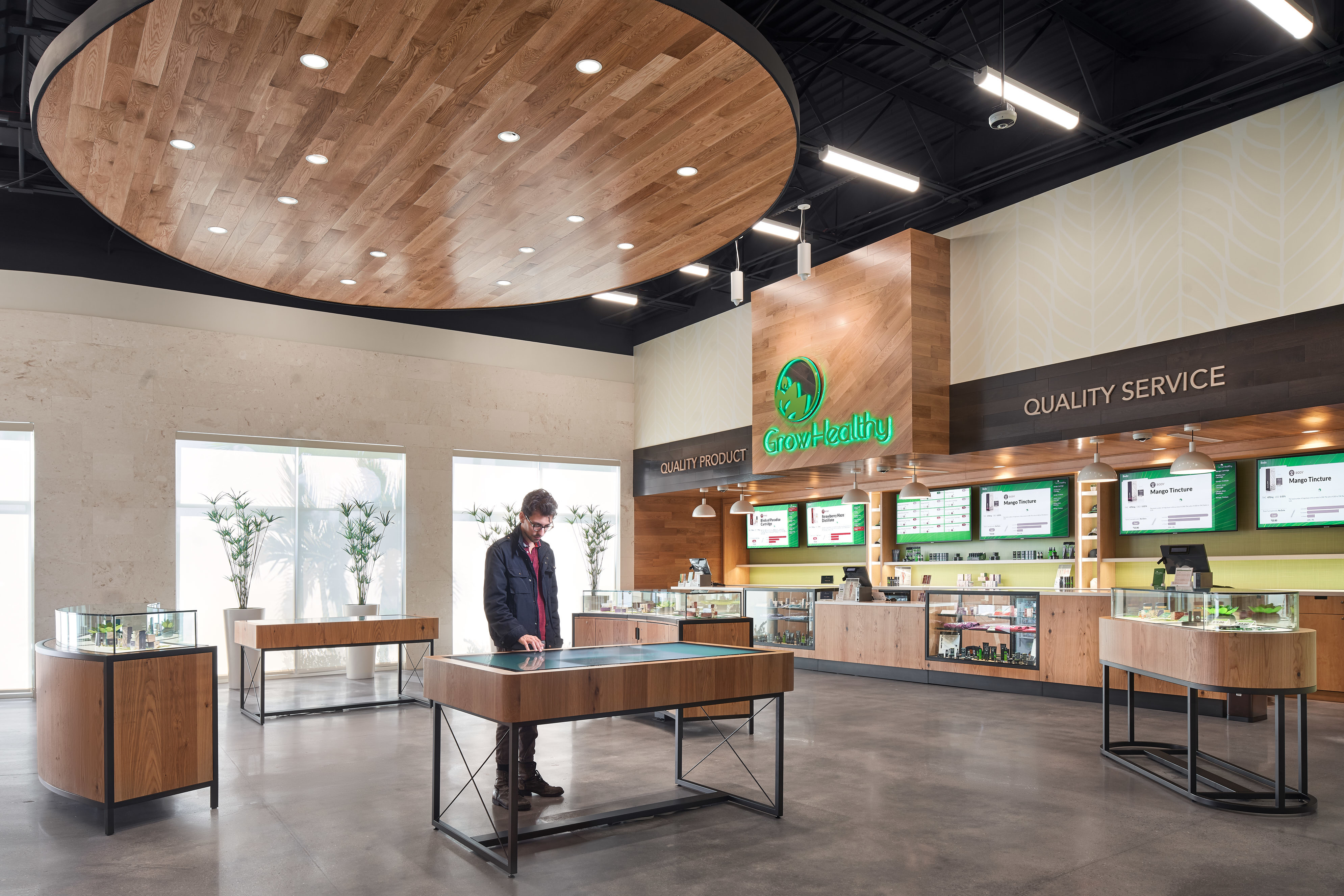3 keys to designing the future of cannabis.
I am continually amazed by the pace and passion of innovation within the cannabis industry. When we designed Stoned Age and Pineapple Express over 2 years ago, cannabis branding and dispensary design was still limited to old tropes and simple interior design solutions. Since then, we have seen our clients come to us with bigger ideas and a better sense of their customers.
As the cannabis industry advances we should expect and strive for a similar improvement in dispensary design, educational techniques, and consumption spaces.
The competition in this new industry will be brand-based and follow the consumer behavior evolution of hybrid physical/digital experiences, sense of community and brand integrity.
It is a close parallel to how we developed and created a strategy for the Disney retail experience more than 15 years ago, but we're we are moving through the phases much faster than the traditional retail model.
I like to think of it as a pattern: basics to copies to experiences.
When starting out, you aim to get the basics right. Good lighting, solid displays, and a clear check-out/help process for the customer.
As the retail strategy advances, you start to pull from inspiring examples in both retail and household design. You copy the interior design trends and incorporate them. Color palettes, green spaces, sleek glass, warm woods accented by metal.
This is where I see most of the cannabis industry and dispensary design at the moment. I like to call it the IKEApple store. We copy what we see as successful. And there is nothing more successful in retail than Apple—based on observation and customer affinity. Some of us go for the MÖCKELBY, rather than the custom piece.
However, some cannabis dispensaries are entering the third step in our pattern: experience.
More specifically, an experience driven by design intelligence.
Look at two examples, one that I worked on directly, one that I greatly admire. First, Grass Monkey, a cannabis dispensary in Portland, Maine. We used design intelligence—which means to consider all aspects of the design including financial, operational, experiential, and branding—to create a customer experience that is part dispensary, part fine art gallery. All aspects pay homage to the local art community and neighborhood.

We took advantage of traditional pot stereotypes like graffiti and grunge to create a space that elevates cannabis art as well as the dispensary experience. There are custom artworks from a variety of artists, an amazing mural, and a playful take on sculpture via a very large banana. Just like an art gallery, the works will rotate throughout the year, creating a retail experience that changes rather than remains stagnant.
Stagnant is a bad quality for a cannabis dispensary. Grass Monkey is vibrant, interesting, and alive.
Next, look at the inspiring vision for Lowell Farms: A Cannabis Cafe in West Hollywood, California. Designed in collaboration with Houston Hospitality, the cafe is awash in biophilic design, plants, and shades of green. While I cannot speak directly for the team behind the space, you can see the thoughtfulness and care that went into the design of the space.
While Lowell Farms and Grass Monkey are challenging the idea of cannabis design, it is important that we understand the variance in the industry, embrace it, but work collectively to use design to further advance the industry.
I have found that cannabis brands who enter the experience phase have 3 things in common:
1. They distinguish themselves by either elevating the experience or pioneering a new one.
We are in an industry with a reputation. From my point of view, we can either elevate that expectation—like we did with Grass Monkey—or we can leave it behind altogether to create something entirely new. With either strategy it is important that we show the customer and the doubter that our experience is different. What they thought they knew about cannabis is outdated and perhaps wrong.
2. They consider how they shape and are shaped by their neighborhood.
If cannabis brands and consumption spaces want to be a part of the community, then we must consider the mutual fit. With so many restrictions around our space it is easy to forget that there are other businesses around us. In some cases, we might want to blend in, others to stand out. We can use design intelligence beyond the front door to help shape our neighborhood. Be a good global citizen and promote it!
3. They leverage technology in the retail experience to improve education, awareness, and discovery.

Our work on Grow Healthy is a perfect example of including technology to serve the customer. Digital boards share information about options and effects, while a central touchscreen allows for causal education by an experienced customer or a newbie. We can also extend technology to create interesting and unexpected connections to the cannabis brand. The mystic pineapple for Pineapple Express acts as a fruit-based fortune teller, helping customers find the perfect puff.
The cannabis industry is truly the first new retail business in a very long time. The passion, dedication and innovation by both retailers and consumers will hopefully leverage the past decades of traditional retail shopping behavior into an entirely new experience.